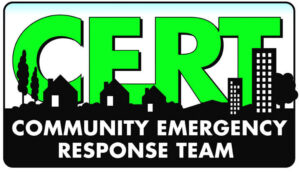Coos Bay, North Bend, Charleston and Bandon Tsunami Information
Since 1854, 21 tsunamis have impacted the Oregon coast. The last two damaging tsunamis were in 1964 as a result of the Great Alaska Earthquake and in 2011 as a result of the Great East Japan Earthquake. It caused severe damage on the Oregon coast and contributed to the loss of lives of four people.
The K-DOCK Staff has compiled information on this page to help you learn and survive an earthquake and tsunami.

Earthquakes in Oregon Cascadia Subduction Zone
What You Can Do to Survive!
 For many years, we’ve been talking about the importance of being prepared for 72 hours. This is a good start, and helpful in the event of short-term power outages or temporary evacuation. But a large earthquake and tsunami will leave much of the area’s transportation routes destroyed. Oregonians will have to count on each other in the community, in the workplace and at home in order to be safe until responders can reach you.
For many years, we’ve been talking about the importance of being prepared for 72 hours. This is a good start, and helpful in the event of short-term power outages or temporary evacuation. But a large earthquake and tsunami will leave much of the area’s transportation routes destroyed. Oregonians will have to count on each other in the community, in the workplace and at home in order to be safe until responders can reach you.
Oregon’s Office of Emergency Management encourages people to be prepared to be on their own for a minimum of two weeks. This lessens the strain on emergency responders who need to focus limited resources on injured and other vulnerable populations immediately following a disaster.
What You Can Do to Survive!
For many years, we’ve been talking about the importance of being prepared for 72 hours. This is a good start, and helpful in the event of short-term power outages or temporary evacuation. But a large earthquake and tsunami will leave much of the area’s transportation routes destroyed. Oregonians will have to count on each other in the community, in the workplace and at home in order to be safe until responders can reach you.
Oregon’s Office of Emergency Management encourages people to be prepared to be on their own for a minimum of two weeks. This lessens the strain on emergency responders who need to focus limited resources on injured and other vulnerable populations immediately following a disaster.
Videos:
- 2 Weeks Ready – Overview
- First Aid
- Food
- Pets & Livestock
- Secure Your Home
- Shelter
- Water
- Earthquake Safety
Publications:
- 2 Weeks Ready – Food
- Children and Babies
- First Aid
- Pets
- Community
- Neighborhood
- Communications
- Shelter
- Water
Learn more in a CERT Class!
 The Community Emergency Response Team (CERT) program educates volunteers about disaster preparedness for the hazards that may impact their area and trains them in basic disaster response skills, such as fire safety, light search and rescue, team organization, and disaster medical operations. CERT offers a consistent, nationwide approach to volunteer training and organization that professional responders can rely on during disaster situations, allowing them to focus on more complex tasks.
The Community Emergency Response Team (CERT) program educates volunteers about disaster preparedness for the hazards that may impact their area and trains them in basic disaster response skills, such as fire safety, light search and rescue, team organization, and disaster medical operations. CERT offers a consistent, nationwide approach to volunteer training and organization that professional responders can rely on during disaster situations, allowing them to focus on more complex tasks.
- CERT Training Online
- Coos County Bay Area CERT Group
Explore and Learn More
- Red Cross – Earthquake Safety
- Ready.gov – Disaster Preparedness
- CDC – Disaster Safety
- Earthquake Country – Get Prepared
- Disaster Preparedness Checklist
